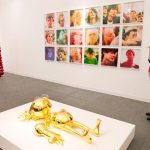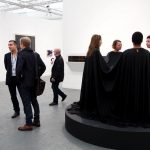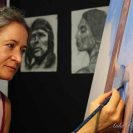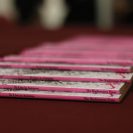The high-profile, high-stakes art (af)fair in London attracted blue-chip galleries, big buyers and art lovers from around the world.
Making waves at the global art market, the annual Frieze Art Fair brought together artists from over 152 of the world’s leading contemporary galleries to the UK.
A firm favorite among followers of international art scene, the Fair opened its doors to art enthusiasts in Regent’s Park, London, from 17-20 October.
The fair, now in its eleventh year, featured two specialist sections: ‘Focus’, dedicated to galleries up to ten years old presenting projects specifically conceived for Frieze, and ‘Frame’, for young galleries who showed solo artist presentations.
The display at Frieze Masters (a showcase of Old Masters) comprised of visually stunning and high quality works from art stalwarts like Andy Warhol, David Hockney, Willem de Kooning, Pablo Picasso, Francis Bacon and Henri Matisse.
Visitors to the fair were also able to enjoy some of the best musical events, panel discussions and talks by leading artists and curators.
Frieze Art Fair was a blend of serious and idiosyncratic, a winning mantra of alluring art and mega fair all the way.
Want to know more? Log onto www.friezelondon.com
Q and Art with Belinda Bowring
Despite a hectic week at the fair, Belinda Bowring, Head of Public Relations, Frieze, was gracious enough to fill us in on the creative forces behind Frieze Art Fair and more.
Tell us how Frieze came about.
Frieze initially started as a publishing company, in 1991 Matthew Slotover and Amanda Sharp, with the artist Tom Gidley, founded the magazine frieze, and the pilot issue of the magazine featured a Butterfly work by the then relatively little known artist Damien Hirst.
In 2003, Matthew Slotover and Amanda Sharp founded Frieze Art Fair, having noticed a gap in the calendar. Although London was a city where artists lived and worked, it did not have a moment in the year when the international art world visited the city, and so the fair was a response to that need.
In 2011, they launched frieze d/e, a German language edition of the magazine. Following that, in 2012 the company undertook perhaps its most ambitious expansion to date launching ‘Frieze New York’, a contemporary art fair in Manhattan, and ‘Frieze Masters’, a fair for art from ancient to modern that takes place in London at the same time as the contemporary fair.
What sets Frieze 2013 apart from its previous editions?
This year, Frieze London introduced some of the biggest changes since its inception, as the fair has been redesigned with wider aisles and more spacious public areas, also with new exhibitors such as Max Hetzler.
For the second edition of Frieze Masters we saw a number of new exhibitors, which look to make this year an unmissable one. New exhibitors in 2013 include: Dan Galeria (São Paulo); Dickinson (London); Dominique Lévy Gallery (New York); Galerie Malingue (Paris); Galerie Sanct Lucas (Vienna); Johnny Van Haeften (London); Landau Fine Art (Montreal); Mitchell-Innes & Nash (New York); Mnuchin Gallery (New York); Otto Naumann (New York); Richard Gray Gallery (Chicago); Richard Green Gallery, (London); and Skarstedt Fine Art (New York).
What are some of the new trends this year?
Galleries are increasingly deciding to use solo displays to best display what they do. This is particularly true at Frieze Masters where we will see solo stands by: Carl Andre (Sperone Westwater, New York); Edward Burra (The Lefevre Gallery, London); Lucio Fontana (Tornabuoni, Paris); David Hockney (Richard Gray, Chicago); Willem de Kooning (Mnuchin Gallery, New York); Wilfredo Lam (Gmurzynska, Zurich); Richard Long (Lisson Gallery); Henri Matisse (Thomas Gibson, London); Robert Motherwell (Bernard Jacobson); Alice Neel (Victoria Miro, London); Victor Pasmore (Marlborough Fine Arts, London); Aaron Siskind (Bruce Silverstein) and Sean Scully (Timothy Taylor).
How many artists from the Middle East are being represented?
We don’t have a definitive list of all artists in the fair but we’re looking forward to seeing some of the favorite galleries from the region including: the Third Line, Sfeir-Semler Gallery and Sommer Contemporary Art.
Can you tell us a little about the Emdash award?
Emdash Award is given to an artist living outside the U.K. during Frieze London every year since 2006. The Emdash Award is supported by the Emdash Foundation, a private foundation with a mission to support new ideas and emerging talent across disciplines, from the arts and cultural projects to science.
This year the Emdash recipient is Pilvi Takala, a Finnish artist. Takala has chosen to give the opportunity to realize the Emdash Award to a committee of 12-year-old children. Throughout the summer these children have been taking part in a series of workshops in order to explore what they might do with the production budget for the award.
Image courtesy of Frieze London.












